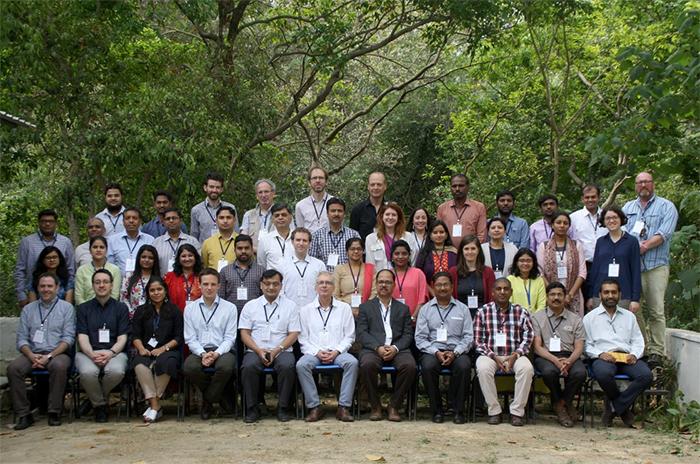
A workshop on ‘Integrating precipitation forecasts and climate predictions with basin-scale hydrological modelling in the Himalayas’ was held from 2-4th of May 2018 at the Wildlife Institute of India in Dehradun (Uttarakhand, India) as an India-UK Water Centre (IUKWC, www.iukwc.org) activity. It was led by Senior Lecturer in climate science Dr Martin Widmann, and Shresth Tayal (The Energy and Resource Institute, TERI, New Delhi), and was attended by over 40 fully funded scientist from India and the UK, including School of Geography, Earth and Environmental Sciences Rhiannon Blake.
The Himalayan region and downstream areas are strongly impacted by hydrological variability. Hydrological forecasts for the Himalayas for days to seasons ahead can benefit stakeholders such as dam operators, farmers, industry, and water management boards in planning their day-to-day activities, while long-term projections help adapting to climate change. They are also crucial to mitigate against risks associated with floods and droughts. A key challenge for providing such predictions is the integration of weather forecast and climate models with glacio-hydrological models. Integrated forecast systems for the Himalayas are still in a pioneering phase and not operationally available. A major problem are precipitation biases in weather and climate models, which in turn lead to biases in the output of glacio-hydrological models. Moreover, not all important processes, basin properties and water use aspects are incorporated in glacio-hydrological models, partly due to scarce observations.
At this workshop, experts from India and the UK presented the current state of meteorological and glacio-hydrological modelling for the Himalayas, of observations available to calibrate and evaluate models, of process understanding, and of forecast dissemination. Based on this assessment, ways forward were suggested, which include:
- making existing meteorological and hydrological observations available through a common platform
- setting up high-resolution meteorological and hydrological networks in test catchments
- evaluating and giving guidance on suitable downscaling and bias correction methods
- analysing large-scale biases in global climate models that affect the regional climate over the Himalayas
- developing integrated meteorological-hydrological models and evaluating them for the test catchments
- engaging with stakeholders to identify which types of forecasts are needed and how they can be best communicated.
The workshop was built upon an IUKWC-funded pump priming project undertaken in 2017 by Rhiannon Blake and led by Martin Widmann, in which current opportunities and challenges in developing hydro-climatic services in the Himalayas had been identified. This work had been done in collaboration with colleagues from India and the UK. Indian partner institutions include the Indian Institute of Tropical Meteorology (Pune), the Centre for Earth and Space Sciences at the University of Hyderabad, and the National Centre for Medium Range Weather Forecasting (NCMRWF, Noida). In conjunction with the workshop Martin Widmann also gave a presentation at NCMRWF on ‘The challenge of providing defensible regional climate projections’.